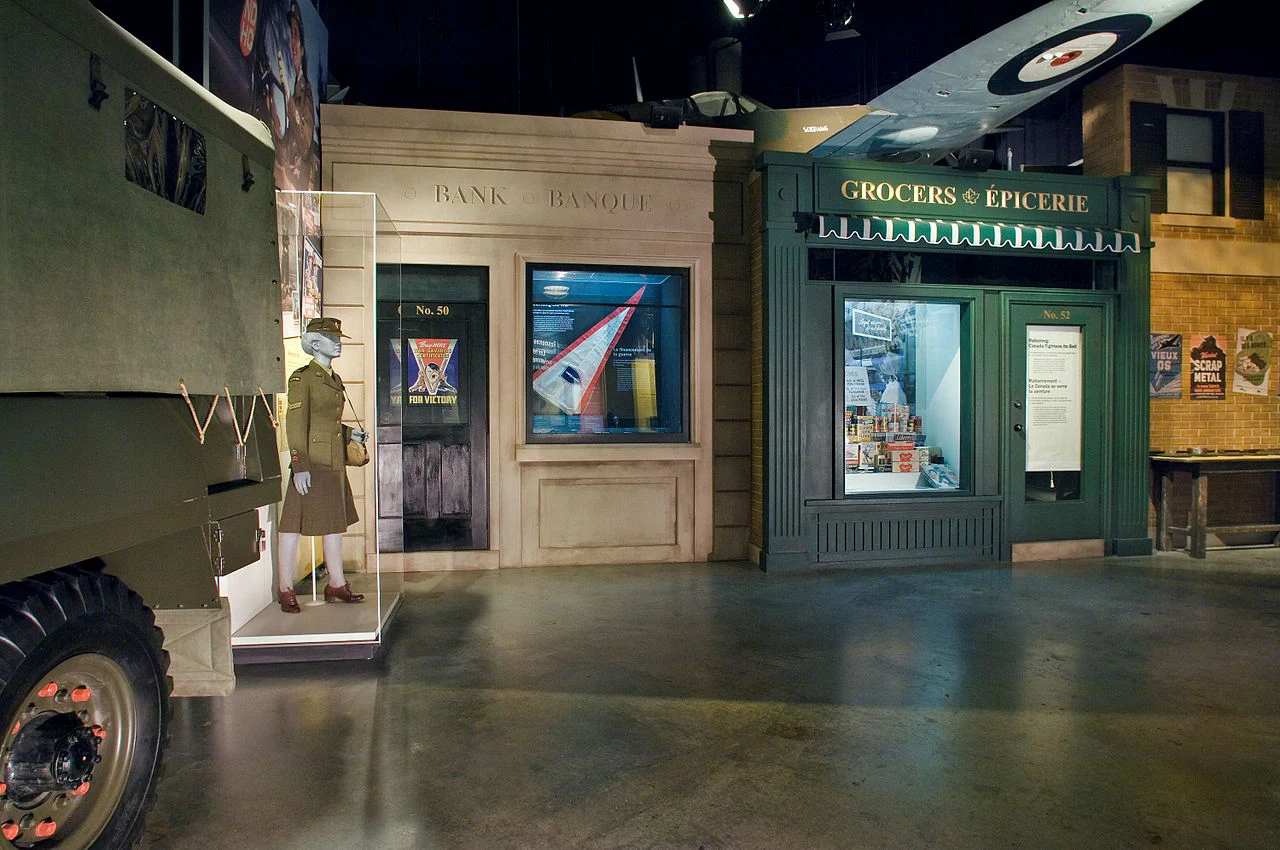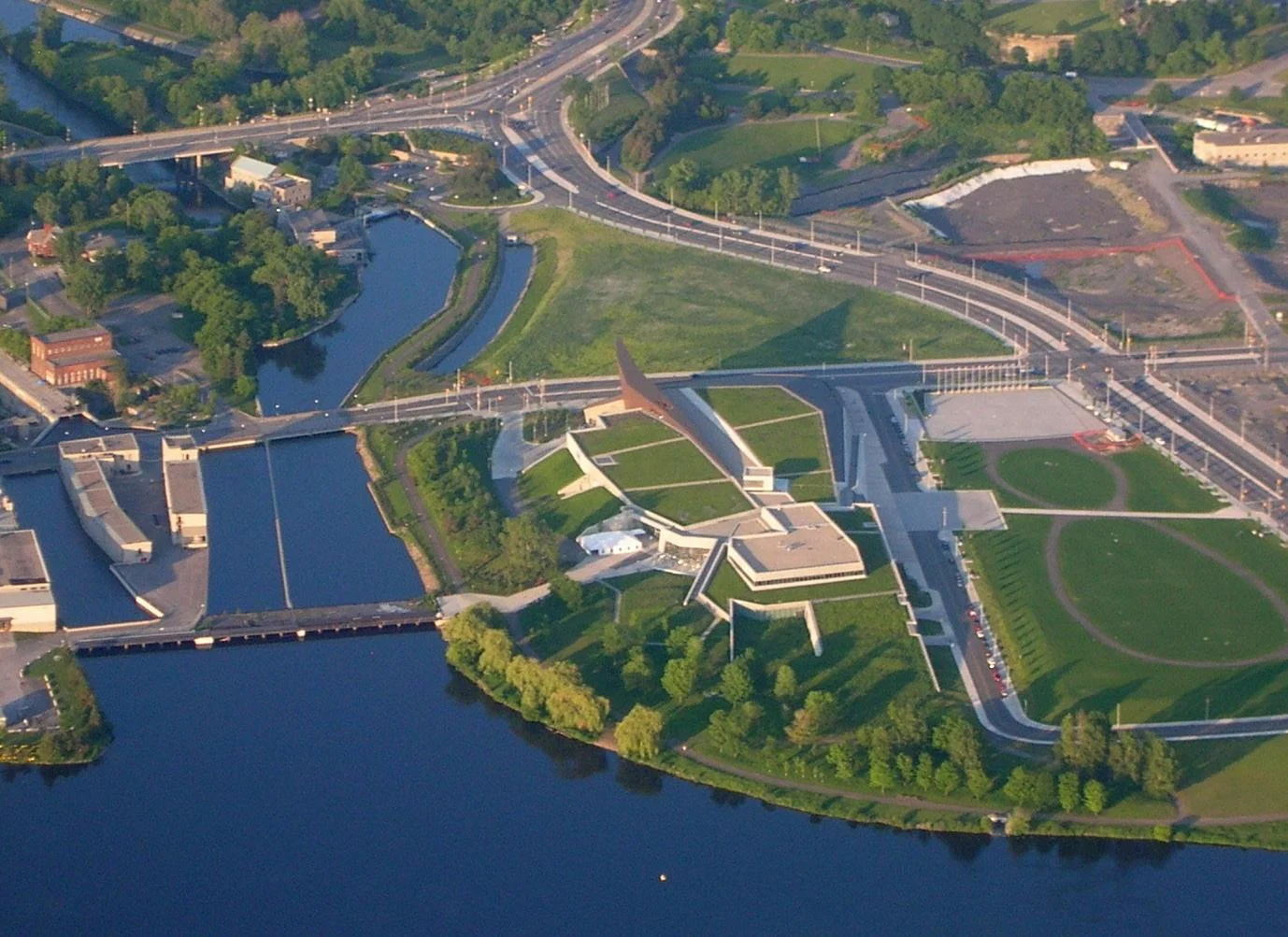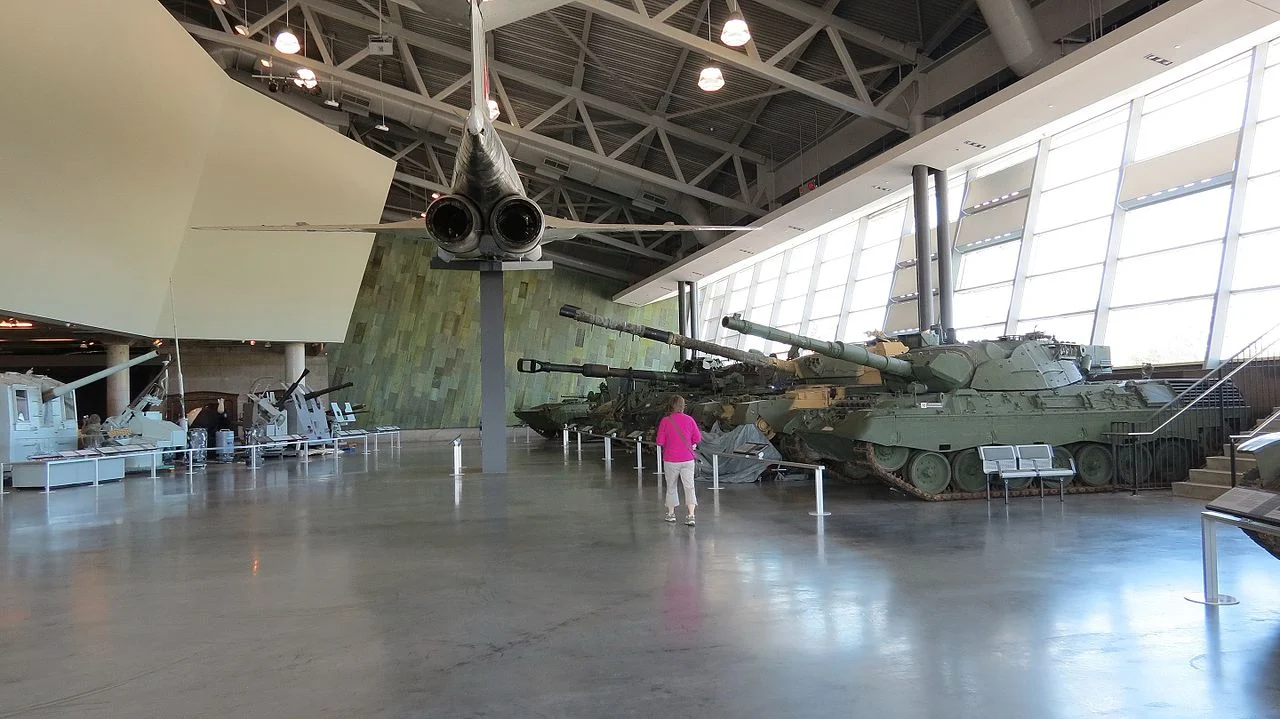Canadian War Museum (Ottawa, Canada) - expositions, opening hours, address, phone numbers, map and photos, official website.
 |
| Canadian War Museum |
The Canadian War Museum is dedicated to the nation's military history and has a vast collection of materials, ranging from documents and artifacts that are several centuries old. There are exhibitions related to the wars that were fought on the territory of present-day Canada, as well as dedicated to world military conflicts of the 20th century, including the Cold War and foreign operations in which Canadian troops took part. A separate part of the museum is designed to store and display large objects such as ship cannons, tanks, motorcycles, jet aircraft, etc. In addition, the museum has a Center for the Study of Military History with a library, which has about 500 thousand artifacts and military certificates, including medals, uniforms, weapons, military art, army vehicles and artillery.
 |
| Canadian War Museum |
The building as a whole is somewhat reminiscent of a bunker with a partially grassy roof, and small windows in the tail tower are made at such intervals as to convey the message "We must not forget" in Morse code.
Building
The military museum was established in 1880, but moved to its current building in May 2005. The modern and unusual architecture of the building, with an irregularly shaped tower reminiscent of the rear fuselage, has earned both professional and public recognition. The building as a whole is somewhat reminiscent of a bunker with a partially grassy roof, and small windows in the tail tower are made at such intervals as to convey the message "We must not forget" in Morse code. The grand opening of the building took place on May 8, 2005, the anniversary of the end of World War II for Europe.
 |
| Canadian War Museum |
Exposition
The permanent exhibition of the museum consists of several exhibition spaces, in 4 of which the material is distributed in chronological order, and the rest are thematic.
The exhibition “Battlefield: Wars on Our Land” refers to the earliest period in the history of the country, from the time when the Indians lived here, and ending in 1885. Here you can see the weapons of Canadian aborigines, learn about conflicts (and alliances) between them and the first Europeans, and trace Canada's past through the Seven Years' War, the American Revolution, the War of 1812, and the conflicts in the Canadian West in 1870 and 1885.
The exhibition "For the Crown and the Land: The South African and World Wars I" covers the period from 1885 to 1931. At this time, Canadian troops were sent abroad in 1899 and in 1914 to participate in the war on the side of the British Empire. The exposition ends with the year in which the country gained independence from the Empire.
Forged in Fire: World War II is an exhibition covering the period from 1931 to 1945. The exposition begins with a characterization of the brutal dictatorships established in Germany, Italy and Japan in the 1930s and outlines Canada's role in the most global war of the 20th century. Among the exhibits of the early exhibitions is the Mercedes limousine, which Hitler himself drove. The main exhibition tells about Canada's participation in the war, the battles in Europe, the Battle of the Atlantic, the air war, the Battle of Dieppe, the battles in Italy, Normandy, the Netherlands and the final approval of the zones of influence in Europe after the end of the war.
The next exhibit in chronological order is called "A Violent Peace: The Cold War, Peacekeepers and Recent Conflicts". It covers the period from 1945 to the present. Here you can learn about the role of Canadian troops in NATO and the UN, about the Korean wars, conflicts in the Persian Gulf, Kosovo, Afghanistan; as well as espionage, homeland security, civil liberties, and military-related pop culture. Materials in this exhibition include comics and board games from the Cold War era, as well as peaceful symbols and an interactive space for visitors to express their own feelings about war, peace and the memory of the past.
Finally, more chamber expositions are waiting for the guests of the museum. Firstly, it is the Hall of Fame of the Royal Canadian Legion with multimedia equipment. With angular walls and a narrow triangular window overlooking the Peace Tower on Parliament Hill, the Regeneration Hall represents, according to its creators, "the physical expression of hope for a better future." In the memorial hall in the foyer of the museum, a single artifact is stored: the helmet of an unknown soldier from the First World War, and the sun's rays fall through a single window exactly on this helmet on Memorial Day (November 11), exactly at 11 o'clock in the morning - the time when 1918 ended war.
 |
| Canadian War Museum |
Lebreton Gallery
But of course, the Lebreton Gallery is of particular interest to museum visitors. This is a vast multi-purpose area where various programs and events are held, and where artillery pieces, aircraft, armored vehicles and so on are on display. Among the exhibits are the McDonnell CF-101 Voodoo Jet, Jagdpanzer VI, a fully restored Panzer V (Panther), Panzer II tank, as well as rare motorcycles, Canadian jeeps and other vehicles, used in the Balkans in the 1990s. In addition, there is the good old T-34, several underwater mines and the German Molch mini-submarine.
Practical information
Address: 1 Vimy Place.
The museum is located in Lebreton Flats, on the corner of Booth Street and McDonald Parkway, right on the picturesque boardwalk along the Ottawa River. You can get here by OC Transpo buses No. 8, 86, 87, 95, 96, 97 (Lebreton stop).
Opening hours: Monday to Wednesday and weekends: 9:30 - 17:00, Thursday: 9:30 - 20:00.
Entrance: adults: 17 CAD, for pensioners: 15 CAD, for students: 13 CAD, for children 3-12 years old: 11 CAD.
Website: http://www.warmuseum.ca